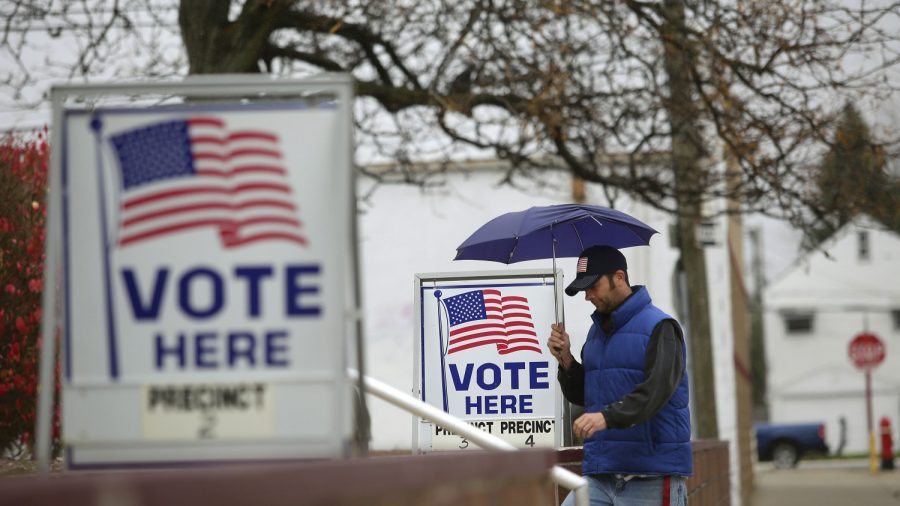Eight Iowa counties have more registered voters than their total voting-age eligible populations—by nearly 19,000—according to data revealed by Judicial Watch, a conservative nonprofit, but Iowa Secretary of State Paul Pate disputed Judicial Watch’s claim.
Pate, a Republican, says the numbers claimed by Judicial Watch are “patently false.”
“It’s unfortunate this organization continues to put out inaccurate data regarding voter registration, and it’s especially disconcerting they chose the day of the Iowa Caucus to do this,” Pate said in a statement.
“My office has told this organization, and others who have made similar claims, that their data regarding Iowa is deeply flawed and their false claims erode voter confidence in elections.”
Dallas County had the most significant discrepancy of almost 15 percent more registered voters than physically and legally possible. Warren County had the smallest discrepancy of just 0.5 percent, according to Judicial Watch.
The discrepancies aren’t necessarily evidence of voter fraud themselves. Sometimes, people remain on voter rolls even after they’ve left the state or died, and over time, faulty records can accumulate.
Yet states have an obligation to exert “reasonable effort” to clean up their voter rolls under the National Voter Registration Act of 1993.
“Dirty voting rolls can mean dirty elections and Iowa needs to undertake a serious effort to address its voting rolls,” Judicial Watch President Tom Fitton said in a Feb. 3 release.
Even voter registration rates lower than 100 percent of the eligible population may indicate messy rolls since it’s unlikely every single eligible person has registered.
Polk County, Iowa’s largest, has a registration rate of nearly 96 percent, which Judicial Watch called “unusually high.”
Iowa is the first state to kick off the primary election process with its Democratic caucuses held on Feb. 3. The latest Emerson poll, held from Jan. 31 to Feb. 2, showed Sen. Bernie Sanders (I-Vt.) leading with 28 percent. Former Vice President Joe Biden trailed him at 21 percent.
The last Monmouth University poll, held from Jan. 23 to Jan. 27, had Biden at 23 percent with Sanders at 21 percent.
Roll Cleanup Push
At least 2.5 million extra voter registrations are on the rolls of 378 counties nationwide, according to Judicial Watch.
Judicial Watch discovered the over-registrations by analyzing data released by the U.S. Election Assistance Commission, an independent, bipartisan commission that was established by the Help America Vote Act of 2002 (HAVA). The Election Assistance Commission develops guidance on how to meet HAVA requirements, adopting voluntary voting system guidelines, and serving as a national clearinghouse of information on election administration.
Four of the states with voter over-registrations—Pennsylvania, North Carolina, Virginia, and Colorado—are also battleground states that will play a significant role in deciding this year’s presidential election.
Multiple nonprofits, prominently Judicial Watch, have been filing lawsuits to force states into compliance with the National Voter Registration Act.
Messy voter rolls can present an opportunity for voter fraud, but the risk also depends on the state laws. In Florida, for example, a person only needs to provide a name, address, and date of birth to receive a ballot by mail. In Iowa, the mail-in ballot request form also requires a driver’s license number or a “Voter PIN”—a number on an ID card any voter can request.
Judicial Watch reached three state-wide settlements in recent years with California, Ohio, and Kentucky to remove millions of ineligible voters from their rolls.
Los Angeles County, in particular, agreed to remove as many as 1.5 million inactive registrations.
San Diego County removed 500,000 inactive names from voter rolls but continues to have a voter registration rate of 117 percent, one of the highest over-registration rates in the country.
Matthew Vadum contributed to this report.
From The Epoch Times


